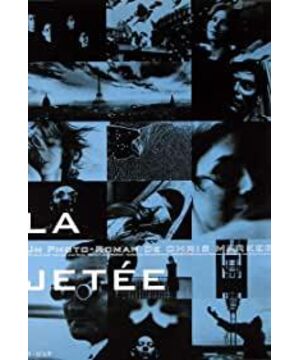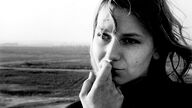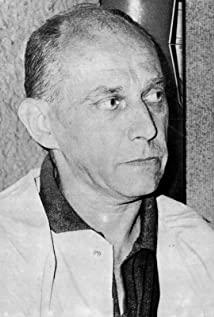The Dyke: Memories of War
- Metaphors of dreams and time
"Dike" is the work of French director Chris Mark, released in February 1962. The whole is basically composed of continuous still photos, and whether it has an image body is not mentioned for the time being (in fact, the only dynamic picture that appears in the middle of the film can be regarded as one of the bases of the image) to discuss the metaphor.
At this time, less than 20 years after the end of World War II, the United States and the Soviet Union were in the midst of a Cold War, the Vietnam War had reached its climax, and the Cuban missile crisis was still 8 months away. The people of Europe have never fully recovered from the haze of world wars. A boy's recollection of the start of the Third World War. In the process of escaping, a man's death will always remain in the boy's heart. Men are grown up boys. Interpretation of "Dike" from the content is a "sci-fi time travel" movie. Men are caught to do experiments, travel through time in consciousness, and save the present. The beginning of the film also reminds us that this is a story about a boy. War, memory, we might say this is the boy's memory of war during the war.
Baudry likened the operation of the film to a dream. In the film, the memory experiment is also treated as "dream". Men come bound in hammocks, blindfolded, injected with drugs, trying to get into a lucid dreaming state to explore time. The dream at this time is both a perception of time. The purpose of the experiment is to explore the past and the future and save the present. It seems to confirm Bergson's view of time: the present is actual, the past and the future are simulation. People are in the perception of the present, condensing the imagination of the past and the future, and establishing connections through memory.
Most of the boy's dreams were about a woman, a woman who passed him by on the bank of his childhood. He has always been obsessed with her. The woman in the dream is a symbol of a boy's sexual initiation, just like Marilyn in The Beautiful Legend of Sicily. In the dream, a man voyeurized her. Eyes are often seen as symbols of power and sexuality. At this time, the man's eyes were blindfolded, and the perpetrator was a man with special eyewear.
One increase and one decrease, the male protagonist is being castrated by another more powerful male. A man has no choice but to trace back in his memory to the source that enlightened him of male power. The film is also interspersed with some broken but beautiful Greek female sculptures at this time, which remind us of the impact of war or the beautiful sum of fragmented memories. War breaks good things, and memories keep good things fresh. This may be why the only dynamic scene in the film is the woman slowly opening her eyes while waking up.
The past is always beautiful and incomplete. Stigler's triple stay also tells us that people select memories based on the perception of time objects. It is also mentioned above that we can only perceive the present, and the past-future is also the connection of the present. From this we can see that time has never existed objectively. We talked about the past, but what about the future? The man in the film travels to the future through memory and sees another group of three-eyed future people. With the help of the mouth of the future, an important theme of the film is drawn: "It is impossible for human beings to deny their past, this is the means of survival." Perhaps this is Chris Mark's reflection on war.
Alan Resnais' reflection in "Night and Fog" (Chris Mark is also the photographer) is a reflection on "modernity", the fact of the rationality of the Holocaust. He denied forgetting. Mark uses the river of memory to melt into a drop of water. Based on the present, sum up experience. People can't go back, and it has been going on for the present of the next game. Paris was rebuilt, the streets were wider, and humans evolved. Going back to the past, it cannot be changed or denied, and it will only be killed by the present. At the end of the film, at the end of time, the original boy witnesses his own death. Time is a river.
There is always a pessimistic determinism in Chris Mark's work. Perhaps influenced by the prevailing existentialist philosophies, Robert Heinlein's "You Reincarnated" is also such a lonely story at the same time. Mark's follow-up "Sun and Moon Without Light" uses influence to reconstruct the history of memory and experience, and "Twelve Monkeys"'s thinking on "travelling through time" can be traced back to "Dike". "Dike" is an image of Chris Mark's use of the metaphor of time and dream to illustrate the memory of war.
View more about La Jetée reviews








